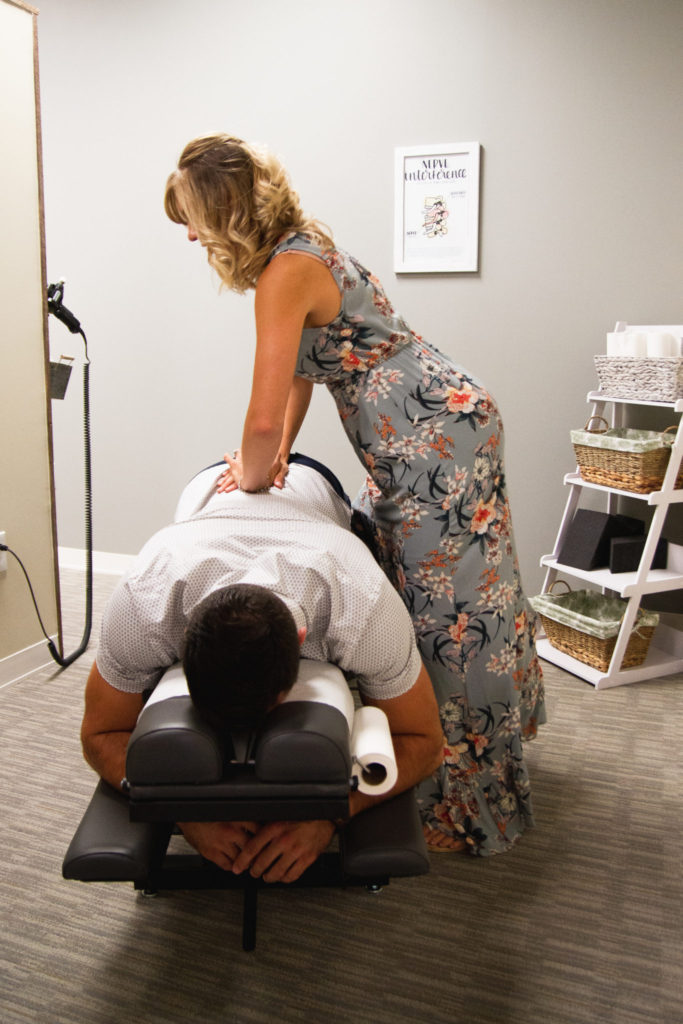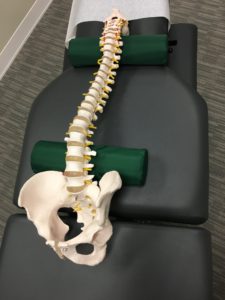Cumming Lower Back Pain Treatment
The city of Cumming is a community bustling with vibrant life that maintains its roots with history and tradition. Don’t let chronic, nagging back pain prevent you from enjoying everything that our wonderful city has to offer!
According to the American Chiropractic Association, lower back pain is a common affliction that affects over 80% of the adult population at one time or another in their lifetime.
What Causes Lower Back Pain?
There can be many causes of lower back pain, and it can be difficult to directly determine the source of the problem without medical intervention, ie. a visit to the chiropractor.
Some of the more usual causes are likely to be undertaking physical activity in which the body is not used to, such as strenuous gardening or lifting of overly heavy objects.
This overexertion can result in a slipped disk (or a herniated disk). This is a result of twisting, generally while lifting. A slipped disk sounds worse than it probably is. It is merely the occurrence of your spinal bone bulging slightly, and touching on some nerves. Some basic exercises can help to relieve the pain and rectify the slipped disk issue.
Other causes of lower back pain can include:
- Work. Many Cumming residents suffer from lower back pain because of their jobs. Un-ergonomic conditions, intense physical activity, and repetitive tasks can strain and stretch your lower back muscles, leading to lower back pain.
- Posture. Poor posture can create pressure on the lower lumbar region of the spine. This added pressure can result in lower back pain and in severe conditions, pain throughout your entire back.
- Injury. Personal injuries, auto accident injuries, and other forms of injury can all cause damage to your back’s muscles and ligaments, resulting in lower back pain.
What are Symptoms of Lower Back Pain?
There can be obvious, and not so obvious, signs that you are dealing with pain in your lower back.
Common symptoms of lower back pain and/or a lower back injury may include:
- Limited Range of Motion – stiffness in your lower back can cause a limited range of motion as you pursue your typical daily activities
- Numbness and Tingling in One Leg – numbness and/or tingling in one of your legs can indicate complications with your sciatic nerve
- Unusual Pain – pain that occurs at unpredictable times or when you assume certain postures
Tips for Managing Lower Back Pain
The best approach to managing your lower back pain is to prevent it in the first place.
These are tips on how you can start:
Lower Back Relief Tip 1: Lie on Your Back
Now this may sound simple (and it is!) but it is also highly effective. Lie flat on the floor, with some pillows placed under your head and knees for support. This takes the strain away from your lower back. An alternative is to place a pillow on a chair seat, and rest your feet on the chair, with your back on the floor.
It is recommended to stay in this position for around 5-25 minutes each session.
This is a great way of resting the back and relieving the pressure off your lower back. You should perform this exercise for no more than 1 to 2 days in a row, getting up and walking around every hour.
Lower Back Relief Tip 2: Use Heating Pads and/or Ice Packs
Heated pads will help to relieve muscle spasm. Use these for 20-30 mins at a time. Ice packs are also a suitable alternative.
Lower Back Relief Tip 3: Medicines to Reduce Swelling
Some medications that assist in reducing swelling are Aspirin and Entrophen. Panadol is also helpful in controlling minor pain while you rest your lower back and recuperate.
Lower Back Relief Tip 4: Massage for Muscle Relief
Massaging the lower back can help to reduce any inflammation and swelling. And as the muscles relax, circulation is increased and pain often lessens.
If these tips are combined, together with much needed bed rest, your back pain should be gone and your back should be returned to its old self.
At this point you may consider practicing some back strengthening exercises, to prevent any future re-occurrence of lower back pain.
How to Know when It’s Time to Visit a Chiropractor for Your Lower Back Pain
We recommend that you do not suffer for weeks or months with pain in your lower back. If you experience any of the symptoms above and self-care methods don’t improve your pain, visit a chiropractor for professional evaluation and treatment.

Dr. Cortner applying chiropractic techniques to relieve a patient’s back pain
Our Approach for Evaluating and Treating Lower Back Pain
At Arise Family Chiropractic, we start with a diagnosis to get to the root of the pain. This knowledge alone often helps our patients make small lifestyle changes that can reduce the pain.
We focus on gentle, natural chiropractic treatments for lower back pain. Some of our preferred chiropractic techniques for our Cumming patients include:
- CBP (Clinical Biomechanics of Posture)
- Thompson Technique
- Webster Technique
- Pettibon Technique
- Light-Force Technique
There is no need to live with back pain! Schedule an appointment with our Cumming chiropractic team today to get the pain relief that you seek.

Other Frequently Asked Questions about Lower Back Pain
Can lower back pain be cancer?
Tumors in your spinal column may cause back pain from weakening or expansion of the bone. This can lead to spinal fractures, spinal instability, or compression of your nerves.
How do I know if my back pain is serious?
We advise that you seek immediate medical attention if you experience lower back pain with any of the following symptoms:
- Severe stomach pain
- Gradual weakness in your legs
- Loss of bowel or bladder control
Will my lower back pain go away?
When back pain is ignored, studies who that does not go away on its own. Studies go on to show that lower back pain continues to affect people for long periods after the first onset.
How long does lower back pain last?
According to Sharecare, statistics show that up to 90% of patients with an acute episode of low back pain feel better within 4-12 weeks.
Recurring episodes, however, are common. 70-80% of patients will suffer another episode within a year.
How should I sleep with lower back pain?
Sleeping on your back may be your best option. Try placing a pillow underneath your knees and keep your spine neutral with a flat back.
For added support, you can also try placing a small, rolled up towel under the small of your back.

Foam rolls can help added support for your back as you sleep
Which exercises are good for lower back pain?
Before engaging in physical activity, be sure to consult a medical professional.
These exercises can help with your lower back pain:
- Partial crunches
- Hamstring stretches
- Wall sits
- Press-up Back
- Bird Dog
- Knee to Chest
- Pelvic Tilts
- Bridging
- Aerobic exercise (walking, swimming, or biking)
- Pilates
When done with proper form, lifting weights may also help relieve your chronic back pain.
To prevent aggravating your lower back pain, you should avoid exercises such as:
- Toe touches
- Sit-ups
- Leg lifts
